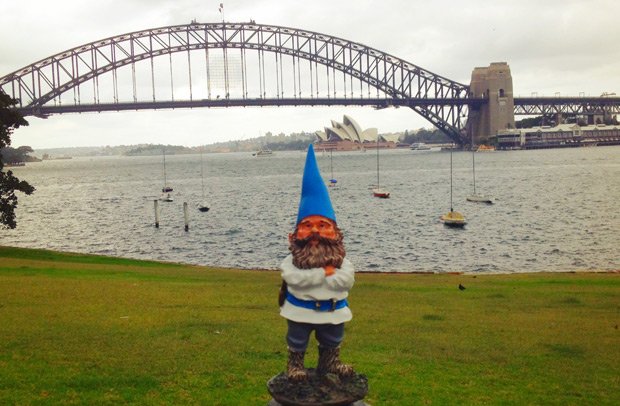Gnome roams globe in the name of gravity

A GERMAN GARDEN GNOME is being shipped to science labs around the globe in a bid to raise awareness about how fluctuations in gravity can alter the weight of an object.
The gallivanting gnome, named Kern, has so far travelled to Lima, Mumbai, Mexico City, Tokyo, Sydney, and the South Pole, to be weighed on a precise scale that travels with him.
Kern’s journey began last October, in Balingen, south Germany, where scale makers Kern & Sohns calibrated a scale to local gravity and put out a call to scientists in other countries to host and weigh the gnome. They’re calling the project a “mass-participation gravity experiment” that aims to entertain and engage the public.
“Most people don’t realise Earth’s gravity actually varies slightly,” says experiment coordinator Tommy Fimpel. “One of the main causes is variations in the shape of the planet. Believe it or not, the Earth is actually slightly potato shaped, so you’ll weigh up to 0.5 per cent more or less, depending on where you go.”
All the results have been posted online (www.gnomeexperiment.com), alongside photos of Kern’s adventures. The globetrotting gnome is currently being weighed at the underground Large Hadron Collider at CERN in Switzerland.
Measuring the force of gravity with a gnome
Kern has been heaviest so far at the Amundsen-Scott South Pole Station in Antarctica, the southernmost point on Earth, where he weighed in at 309.82g.
Professor Igor Bray, Director of the Institute of Theoretical Physics at Curtin University, WA, says this isn’t surprising because of the imperfect “pumpkin” shape of the Earth.
“The poles are closest to the centre, and hence have the greatest pull due to gravity,” he says. “In the Antarctica there’s a major continent that has density greater than water [so] it yields the greatest pull. This will be hard to beat elsewhere!”

Kern the gnome visits the South Pole Telescope at the Amundsen-Scott South Pole Station in Antarctica, where he recorded his heaviest weight (Credit: The Gnome Experiment)
It’s also true then, that the further objects move towards the equator and away from the poles, the lighter they’ll be. The force of gravity is much weaker at the equator because of inertia caused by Earth’s rotation, and because it’s furthest from the planet’s centre.
So naturally, Kern has been lightest on the scales in more tropical places. In Noumea, New Caledonia he weighed 307.63g, and in Mumbai, a very light 307.56g.
Gnome Down Under in Sydney
In Sydney, Kern weighed in at 307.80g.
“It was a real thrill,” says Andre Wyzenbeek, general manager of John Morris Scientific in Sydney, which hosted the gnome in January. He says the great thing about the experiment is that it’s managed to capture the attention of the public while exploring an interesting scientific phenomenon.
He says the team also had to be very careful when handling the gnome, so as not to interfere with his mass.
“The name of the game is to not expose the gnome to too much of the outside world,” he says. “It’s not the kind of thing you want to take to the pub.
“That being said you still want to take him to some interesting places and get some interesting pictures, because that really enables people to relate to the journey he’s gone on, and the journey of discovery of difference in gravity.”

Kern the gnome is travelling the world with a precision scale to document how gravity affects his weight.(Credit: The Gnome Experiment)
RELATED STORIES

